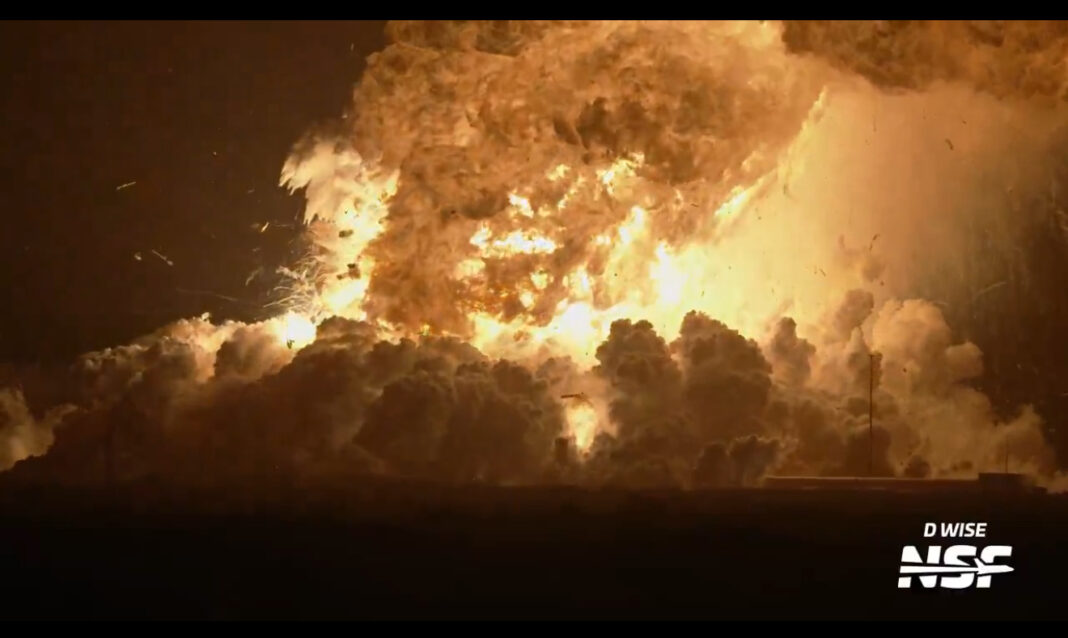- Starship 36 exploded during a static fire test on June 18, 2025, around 11 p.m. CT
- No injuries were reported, and safety zones were maintained throughout
- SpaceX confirmed a “major anomaly” and launched a full investigation
- Public urged to stay away from the affected Starbase area
- The explosion occurred ahead of the highly anticipated Flight 10 mission
A dramatic explosion rocked SpaceX’s Starbase facility late Wednesday night, as Starship 36 suffered a catastrophic failure during a routine static fire test. The incident, described by the company as a “major anomaly,” occurred at approximately 11 p.m. Central Time and was visible across large parts of Cameron County.
What Happened
The explosion took place during ignition testing at the Masseys test site near Starbase City, Texas. Just as the engines on Starship 36 ignited, a massive fireball erupted, captured live by spaceflight observers and streamed by @NASASpaceflight. The test was part of preparations for the upcoming Flight 10 of Starship, a critical step in SpaceX’s Mars colonization plans.
Ship 36 experiences a RUD at Massey’s during testing prior to Starship Flight 10. Seen in slow motion.
— D Wise (@dwisecinema) June 19, 2025
Continue to watch live: https://t.co/wL0tTdxtla
📸: @NASASpaceflight pic.twitter.com/sSy72p79fM
SpaceX Responds
In an official statement released shortly after the incident via their X (formerly Twitter) account, SpaceX stated:
The full post from SpaceX is available on their official page: SpaceX official statement.
Next Steps
An internal and federal investigation is now underway to determine the root cause of the anomaly. It remains unclear how the incident will impact the timeline for Starship’s tenth test flight, which has been a focal point for the company’s 2025 mission milestones.
Experts suggest that while static fire test failures are not uncommon in early-stage spacecraft, the scale of this explosion raises questions about structural integrity, fuel system reliability, and ground test protocols. FAA officials are expected to monitor SpaceX’s recovery and investigation process closely.
Background: Starship’s Journey
Starship, SpaceX’s next-generation fully reusable launch system, is designed to carry up to 100 passengers or cargo to the Moon, Mars, and beyond. The program has seen a series of incremental developments with multiple suborbital and orbital flight tests since 2021.
Starship Flight 10, now delayed, was expected to feature new upgrades to Raptor engines, heat shielding, and payload capacity. The launch would have marked another significant step in Elon Musk’s long-term vision of interplanetary travel and commercial orbital flights.
A global media for the latest news, entertainment, music fashion, and more.















